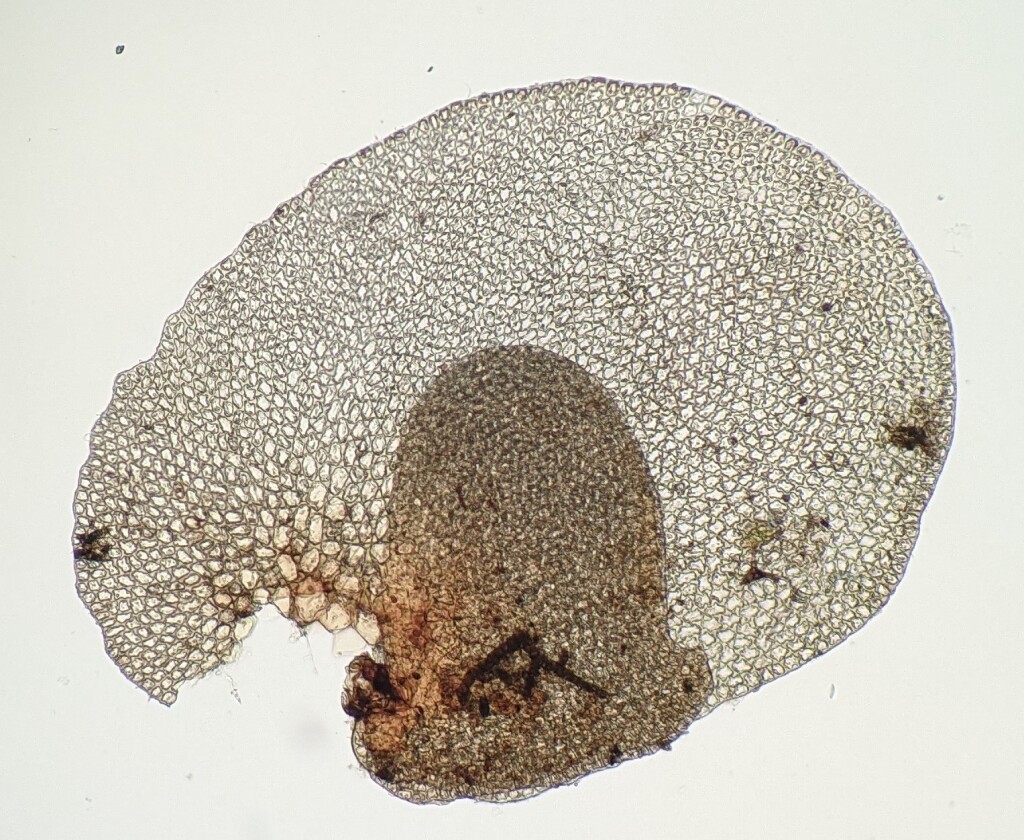Frullania incumbens
Mitt.Epiphytic, yellowish brown to dark brown. Stems irregularly pinnate, bipinnate or rarely tripinnate. Mid stem and branch lateral leaf lobes elliptic, (0.35–) 0.52–0.85 mm long, (0.29–) 0.41–0.63 mm wide, rounded to subtruncate at apex, not angled away from substrate when moist, imbricate; cells elliptic at base becoming irregular toward centre and margins, 10–20 µm long and 10–15 µm wide at margins, 17–33 µm long and 9–20 µm wide near centre, 16–40 µm long and 15–33 µm wide at base, with prominent trigones throughout, with prominent intermediate thickenings away from base, with occasional smaller intermediate thickenings near base. Lobule campanulate, (0.22–) 0.26–0.44 (–0.53) mm tall, (0.09–) 0.15–0.3 wide, with longest axis angled inwards into the stem and c. twice the length of the shorter axis, imbricate with adjacent lobules on same side of stem to distant, with rounded apex; cells irregular, 13–33 µm long, 7–17 µm wide, with trigones and intermediate thickenings throughout. Stylus 8–28 cells in total, up to 6 cells wide, orbicular or ovate with filiform apex comprised of a single row of 2–4 cells. Underleaves obovate, bifid 1/4–1/3 of length, otherwise entire, (0.16–) 0.19–0.43 (–0.45) mm long, (0.13–) 0.14–0.4 mm wide, imbricate to distant; sinus acute to U-shaped; lobes obtuse at apex; cells irregular, 15–38 µm long, 10–17 µm wide, with trigones and intermediate thickenings throughout. Perianth obovate-pyriform, 3-keeled, plicate toward beak, 1.4–1.54 mm long, 0.8–0.9 mm wide, convex dorsally, emarginate at apex, with a beak.
Known from one record from Acheron Way, near Warburton, from a recently fallen branch of Nothofagus cunninghamii in cool temperate rainforest. Also NSW, ACT, Tas and New Zealand.
The tall campanulate lobules with their apices angling in toward the stem is diagnostic and readily distinguishes this species from other Victorian Frullania.
 Spinning
Spinning